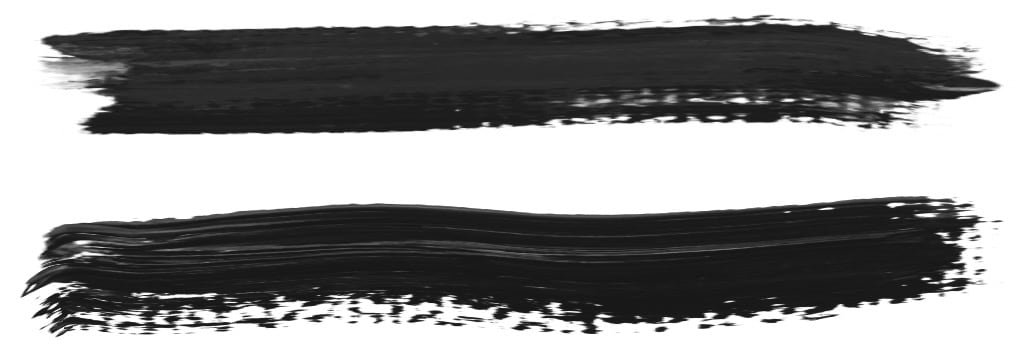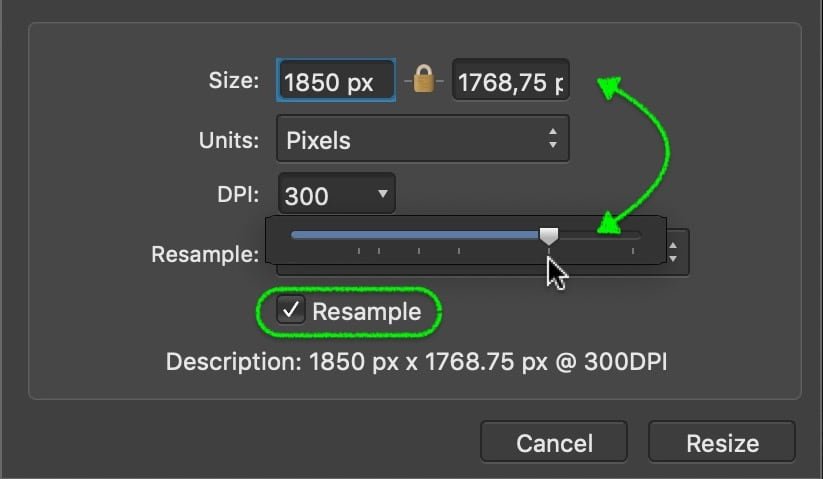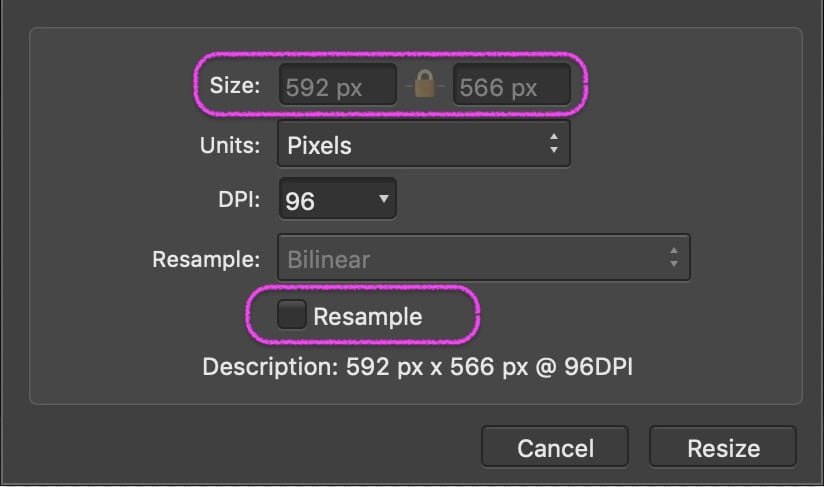-
Posts
11,610 -
Joined
-
Last visited
Everything posted by thomaso
-

image size in Photo
thomaso replied to KarinC's topic in Affinity on Desktop Questions (macOS and Windows)
So your workflow is different from mine. – What do you get if you just/directly use your "Screenshot(485).jpg" for the exports with reduced size? And what are your settings in the Context Toolbar when cropping the image in APhoto? -

image size in Photo
thomaso replied to KarinC's topic in Affinity on Desktop Questions (macOS and Windows)
What is the cropping for? – Your initial (and my) smaller result show the same detail as the large screenshot "Screenshot(485).jpg", just downscaled, without any cropping. -

IDML specification
thomaso replied to Tom Robinson's topic in Affinity on Desktop Questions (macOS and Windows)
Can you attach sample files: 1x PDF, 1x your IDML, 1x ID's IMDL? -

image size in Photo
thomaso replied to KarinC's topic in Affinity on Desktop Questions (macOS and Windows)
I opened your large image [Screenshot(485).jpg] in APub + exported this as JPG and PNG with the pixel dimensions of you smaller image [resize.jpg]. While I used the option "Lanczos 3 (non separable)" which appears to do some sharpening also with "Bilinear", the default setting when downscaling, I don't get your obviously blurred look. -

IDML specification
thomaso replied to Tom Robinson's topic in Affinity on Desktop Questions (macOS and Windows)
If you click the "Forums" or the "Home" link in the upper left corner of a forum's window you get an overview on all available forums/subforums. Then scrolling down leads you to the Bug Reports area: https://forum.affinity.serif.com/index.php?/forum/71-bug-reporting/ -
"Probehalber"? – Welchen visuellen Eindruck willst du "eigentlich"/tatsächlich erreichen? Wenn das Ziel ist, die weißen Linien des EPS in derselben Farbe wie das Hintergrundrechteck zu färben und dabei das helle Lila als Prozentwert eines dunkleren Lila zu verwenden, funktioniert die reduzierte Deckkraft nicht, da bei Überlagerung von zwei halbtransparenten Objekten die Farbe des oberen Objekts zur unteren addiert wird, das visuelle Ergebnis entspricht dem Ebenen-Blendmodus "Multiplizieren": Stattdessen würde eine opake, deckende Farbe mit reduzierten Farbwerten klappen: Die 50% von 80-100-0-0 entsprechen 100% von 40-50-0-0. Alternativ kannst du den Tonwert-Schieberegler verwenden, um einen prozentualen Wert einer Farbe einzustellen.
-

user-defined bullets
thomaso replied to JKSeiner's topic in Affinity on Desktop Questions (macOS and Windows)
… "Variante de police" – is a font in French the police… for text appearance? 👮♀️ -

image size in Photo
thomaso replied to KarinC's topic in Affinity on Desktop Questions (macOS and Windows)
No, I wonder how you achieved this blurred fuzzyness. Compare below: • yours (10 kb) • JPG (13 kb) • PNG (34 kb): -
The OP's issue appears to be that Affinity does not handle the "standard" .csv in the user folder but .propcol only, and requires .ase or its proprietary (not standard) .afpalette for import. It would be nice if Affinity would work as "standard" and handle a .csv palette similar to its handling of .ase, – or to this two alternative workarounds for palette file creation: https://graphicdesign.stackexchange.com/questions/155558/how-can-i-easily-convert-a-plaintext-list-of-hex-values-to-an-adobe-aco-ase-colo https://colorslurp.com/blog/a-complete-guide-to-ase-files#create-ase-files-with-colorslurp
- 14 replies
-
- affinity publisher
- affinity photo
-
(and 2 more)
Tagged with:
-
Design Aids (Develop Persona only): Show Clipped Highlights—when selected, highlight areas which suffer from loss of detail due to clipping are displayed on the image in red. Show Clipped Shadows—when selected, shadow areas which suffer from loss of detail due to clipping are displayed on the image in blue. Show Clipped Tones—when selected, midtone areas which suffer from loss of detail due to clipping are displayed on the image in yellow. https://affinity.help/photo2/English.lproj/index.html?page=pages/Workspace/toolbar.html&title=Toolbar
-
Can you reproduce this "Save As…" with a new document in v2 without getting the field updated when saving with another document name? To me in V1 every "Save As…" with another file name does update this field accordingly + gets used/offered as default name when exporting the document. This behaviour appears to be interrupted only if I have changed the field manually, then the document keeps this manual entry regardless whether I just "Save" or choose "Save As…" even with a new name. "Title" or "Author" etc. are metadata and an attribute of many file types (not Affinity specific), and a general property of PDF, too. Considering that PDF files may get created + send via data base related tools it can make sense to distinguish the file name from its document's title since the file name in such a process can either become the same name for a range of documents or a rather 'coincidental' series of digits or characters. But I wonder whether it is possible to deactivate and generally prevent Affinity from filling this fields by default automatically at all. (It seems for "Author" it worked to delete it once in any earlier document to prevent its auto-fill for future documents)
-

Resample / resize
thomaso replied to AvdB-Netherlands's topic in Affinity on Desktop Questions (macOS and Windows)
If you have the Document Properties in mind: "Resize" may change the DPI only, while "Resample" also affects the pixel dimensions (total amount of pixels, Megapixels) and thus "Resample" adds or removes pixels from the current document. If you have object / layer editing in mind then a pixel layer gets resized at the current document resolution (DPI) and resampling affects this layer when rasterizing gets selected. This means you can downsize a pixel layer and upsize it at a later time without loss unless you don't rasterize it in between. If you have export in mind then an export as raster image file (JPG, PNG, TIF, etc.) changing the current size will always resample, while export as PDF offers an option to avoid downsampling (or may even upsample under certain conditions). -

centering spread for editing
thomaso replied to caruso john's topic in Affinity on Desktop Questions (macOS and Windows)
Instead of "clicking CAREFULLY on the middle" you can just double-click on the page number below the page thumbnails to get the spread displayed completely and centred. This offset for page display depends on your window size (aspect ratio) and spread format. The dark area (the "pasteboard") will be smaller if you increase the window height / reduce the window width or activate the right studio panels for instance… -
It's caused and required by PDF/X-1. – The technical PDF specifications for PDF/X-1 and PDF/X3 do not allow transparency and thus any possible transparency in your layout document gets flattened on export whereas it does not with the preset "for print". How about the layer opacity for the affected text frames? For instance, it may have happened that you pressed one or two digits on your keyboard while this master text frame has been selected.
-

AI discussion (split from Canva thread)
thomaso replied to JGD's topic in Affinity on Desktop Questions (macOS and Windows)
You still mix (confuse) various understandings (definitions) making your statement(s) ambiguous and arbitrary (and thus 'true' but rather worthless). 1. If you understand "art" as a result only then AI does not matter at all and everything can be felt, understood and defined as art. (a stone, a blue canvas, a single brush stroke, an automaton, …) 1.1. Also, if your definition of "art" includes a process of creation with technical skills (knowledge) then every process can be seen as art. ("The Art of Coding", "The Art of Using Data Merge in APub", "The Art of Car Repair", "The Art of Cooking"). 2. If the process of "art" creation includes mood & emotion of its creator then it matters a lot what the creator can or cannot feel – and AI is generally excluded from art creation, while, again, the range of "art" is extremely wide ("The Art of Living"). 2.1. If "art" creation requires a creator with a specific inner attitude (e.g. of devotion, passion, serenity) then the result (1.) might not matter at all. Then "art" gets close to "religion" ("Zen and the Art of Motorcycle Maintenance") and a judgement of/about "art" requires "believing", with the viewer/consumer as a|the relevant part. 3. In this process the initiator (orderer, client, patron, sponsor) may be required or not, but will not become the/an artist, too. Neither was the church nor is a business or a user of AI an artist / art creator when ordering, initiating, prompting a certain result. Nevertheless, initiating (motivating, organizing) a process of creation can be seen as an act of art (Andy Warhol's 'Factory') and 1.1. gets active ("The Art of Management", "The Art Director"). 4. Therefore you may need to distinguish "art" from "decoration", an "artist" from an "artisan" and the creating process from its craft + from its initiating versus its consuming process when arguing about or defining its involved terms or ideas. 5. Particularly since an "artistic" creation may involve "artificial" processes while the consumption process provides "imagination" + "creativity", the entire issue is almost infinitely complex and therefore "strong emotions" are primarily a matter of the consumption process and are independent from the process of "art" creation or its result: We can feel a story when we look at letters or a 'simple' drawing from the Stone age, just as we may get frightened by a noise in the forest at night, regardless of whether the noise or trees are natural (real) or rather virtual like a painting or a movie or letters or just the idea (imagination) of our thoughts that create our emotions individually. When consuming a simulation no perfection or precision is required to trigger emotions, emotions work since ages with a range of beings such as "Zeus", "Jehovah", "God", "Allah", a "Spaghetti Monster", entirely regardless of a visualisation or technical needs. Furthermore, it also works the other way around: technological progress may increase distrust, leading us to separate emotions from ideas and ideas from reality. So the increased use of "artificial" technology may also lead to people becoming less emotionally triggered while training consumer awareness of possible simulations, whether hand-made or computer-generated. -

Hugh PDF file sizes
thomaso replied to Ross Hurley's topic in Affinity on Desktop Questions (macOS and Windows)
That's true but would hardly cause / explain the large difference in the resulting PDF file size of 1:10 (i.e. 5 MB vs 50 MB). Also the "flatten" preset mentioned by the OP seems to use 85%, different to "print" and "press". … Whereas this aspect may also answer my previous question: -

AI discussion (split from Canva thread)
thomaso replied to JGD's topic in Affinity on Desktop Questions (macOS and Windows)
You seem to confuse possible expressions (output) with possible emotions (felt inside). As long as the emergence of human "consciousness", "emotion", "experience", etc. are not scientifically known and clearly (unambiguous) definable, they cannot be programmed as realistic properties of AI but simulations only. Until then, a statement like "inevitable" is very arbitrary and correspondingly worthless because it is based on pure speculation and leaves the concrete "inevitable" unclear. It is rather as vague as a statement like "one day every human will be completely intelligent". -
It could and should help … and at least shed a little more light on the possible issue or solution: @NotMyFault mentions the app + the OS version. To me in V1 clicking a swatch does work for gradients … … but not for gradient maps (while using the rectangular "Colour" well in the map dialog window does work):
-
Your experience/video appears to be expected ('by design'): This two colour wells can have two states: <- Stroke ('ring', 'torus') in front sets the stroke colour when changing colour values. <- Fill (circle) in front affects the fill colour accordingly. Depending on the current setting one icon is partially covering the other. You can switch between the two states by clicking on the corresponding icon. If you want to show a video to the forum you can add it to your forum's post directly, either by dragging or by using the link "choose files…" below your text area when creating a post.
-

Hugh PDF file sizes
thomaso replied to Ross Hurley's topic in Affinity on Desktop Questions (macOS and Windows)
The presets and settings in Affinity aren't identical with those of ID and a large file size is influenced by various settings only. Thus it makes sense to question the settings. Unfortunately I can't open V2 documents but another user will inspect your .afpub. Nevertheless I'd like to inspect an resulted PDF, can you upload a PDF exported from this page, too, plus a screenshot of its used export settings? -

Hugh PDF file sizes
thomaso replied to Ross Hurley's topic in Affinity on Desktop Questions (macOS and Windows)
This sounds unclear. If the image files are 8 bit they maybe in colour space grayscale (1 channel 8 bit) or RGB (3 channels á 8 bit = 24 bit) – but this profile is a CMYK profile (4 channels á 8 bit = 32 bit). What colour space & profile is the layout document, and what space & profile are set for export? The large file size may indicate that the images don't get compressed on export. Also this two sounds strange and may indicate that the images are neither downsampled nor compressed on export. In particular odd is that exporting with preset "flatten" creates a smaller PDF than presets "print" or "press". EDIT: Not odd, considering the different quality/compression settings in the presets "flatten" (85%) versus "print" and "press" (above 90%). It appears useful that you upload your Affinity document with a sample image (embedded or as a separate file) for a closer look in your various settings. Or at least upload a sample PDF which contains one of the layout pages.




















